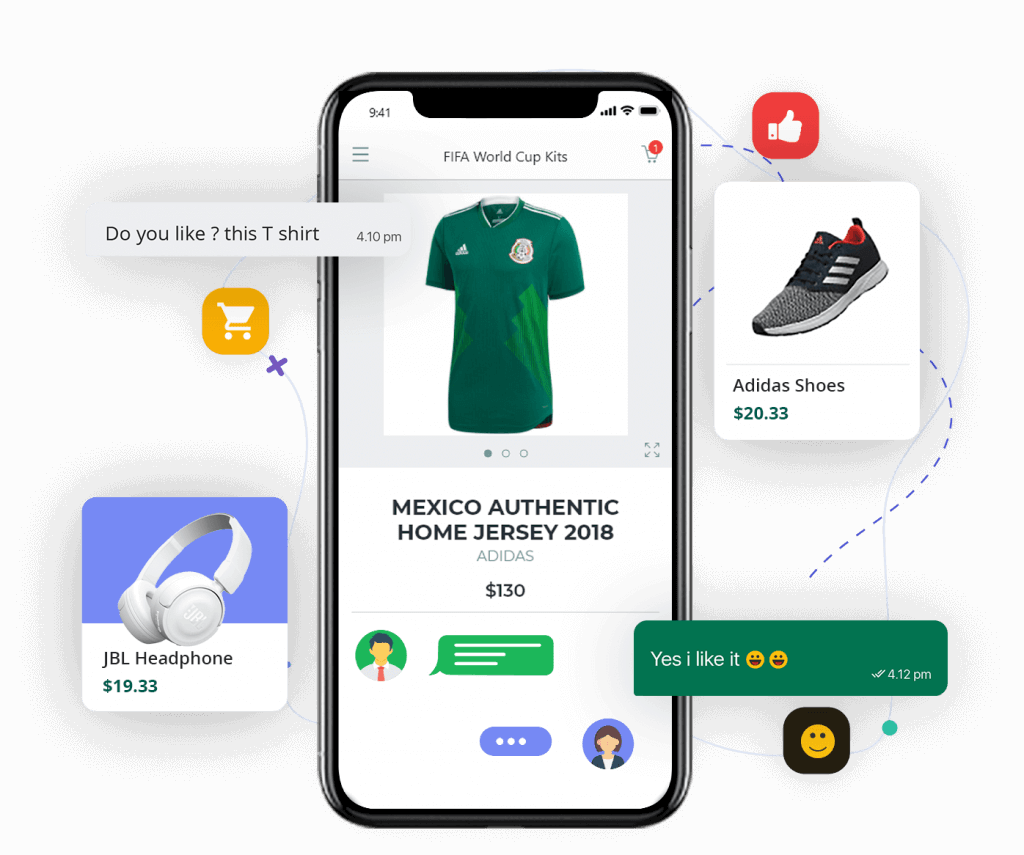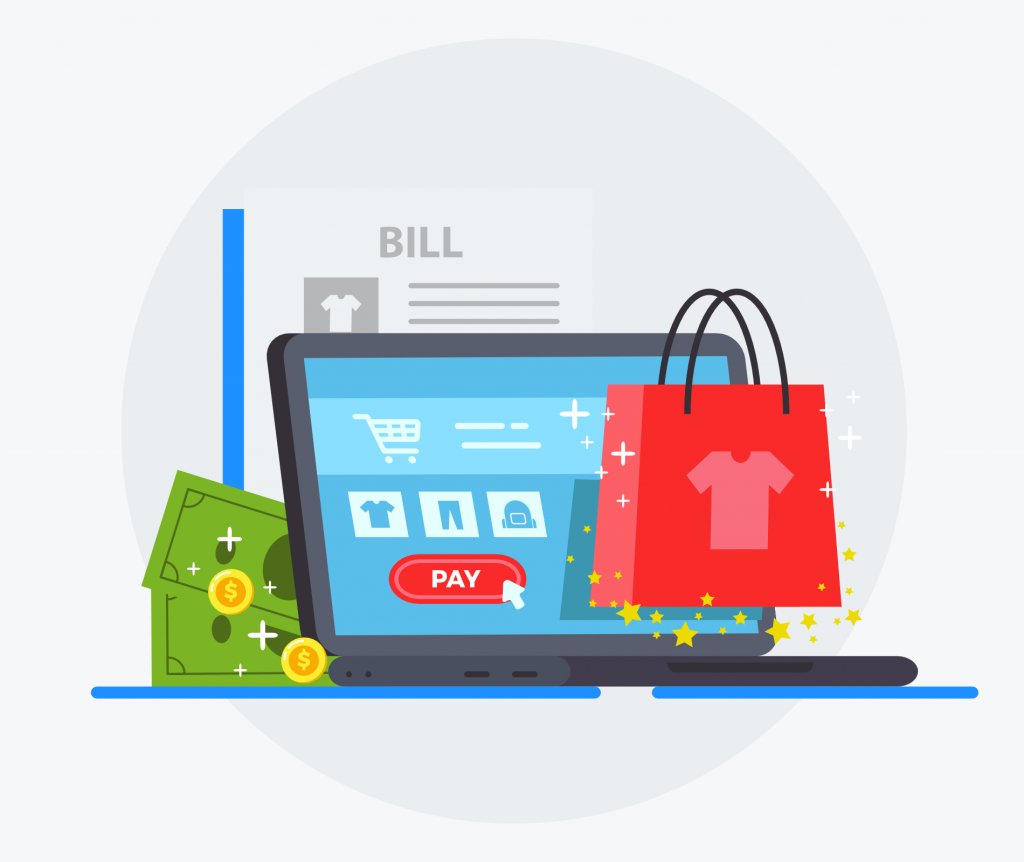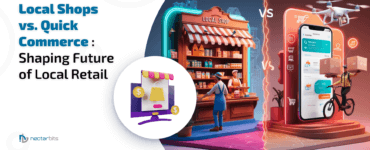“People were doing business with one another through the Internet already, through bulletin boards. But on the web, we could make it interactive, we could create an auction, and we could create a real marketplace.” – Pierre Omidyar, Founder of eBay.
Hope, now, you are clear with the marketplace phenomenon where the website owner allows third-party sellers to sell the offerings and invoice the customers directly. The unlimited number of sellers can connect with the customers and sell items to them just the way it’s done in brick-and-mortar stores. The marketplace owner not necessarily has to list multiple sellers; instead, there can be a marketplace where a single brand or multiple brands selling the same products.

Cut to the chase: There are two types of marketplaces- multivendor marketplace and single vendor marketplace. Let’s understand each one of them in a nutshell before understanding the differences between the two.
Single vendor Ecommerce app/website development
The single vendor marketplace is referred to as standalone websites because the website owner is the only seller that owns the inventory and sells the products to the customers. The owner itself invoice the customers and pay value-added tax. This type of marketplace is more customer-focused because only one store owner operates to target the customer base.
Multi-vendor Ecommerce App/website development
The multivendor marketplace owner doesn’t own inventory; instead, they allow various sellers to register and sell the products using the platform. A large number of sellers sell their products that are governed by the administrator and lots of transaction takes place that results in high profits.
The differences between the multivendor marketplace and single vendor marketplace
Scalability matters a ton!
In the multivendor marketplace, the owner has no involvement in product buying or selling that makes the business less financial risk. Also, if one of the sellers runs into financial loss, then other sellers that fill the void. Also, if the marketplace grows and prospers, and the traffic increases, then the owner can easily meet the demand by scaling the number of vendors.
On the flip side, the single-vendor marketplaces have to keep an eye on stock levels and need to continuously invest in the stocks to meet the growing demand. It also comes with the worry of spending huge sums of money on inventory or arranging warehouse facilities.
Inventory to maintain
Today, customers need more options before making a purchase. It makes the marketplace the sweet spot for the customers as they get everything that they are looking for. However, it comes with extra efforts into marketing to grab the customers’ attention to sell the products that fall into the ‘less selling’ category. Also, if the marketing tactics fail in selling the products, the owner can deactivate the product.
On the other hand, the single-vendor marketplace owners have to maintain the inventory understanding the buying trends. In the event, the owner finds the product that’s not selling at the expected frequency, it’s put on discount to sell the complete stock.
Time and money investment
The complexity level of the single-vendor website development defines the time and dollars investment it requires. Also, the initial set up and post-development maintenance are the add-ons. The huge investment won’t pay off in the short term. It demands a lot of time and extra work to break the investment.

The multivendor marketplace development is even a little higher complex and time-expensive as compared to single-vendor mobile app development. However, post-development, it’s quite easy to get the marketplace up and running as it requires vendors to register, list the products, and start selling. The high volume of transactions increases the profit margins that are used by the owner to accelerate the marketplace growth.
The marketing approach that’s quite different
In a single vendor marketplace, only a single vendor is liable to increase the reach to the customers, drive traffic to the website, and turn visitors into potential customers.
Under a multivendor marketplace, the owner has to work on both- buyers and sellers to keep them stay glued to the platform and continue buying and selling. The burden of marketing is taken off by the sellers from the shoulder of the owner because the sellers also individually advertise about the marketplace existence to improve marketplace awareness. The happy customers help too by spreading the good word of mouth about the marketplace.
Read more: Technology Stack for E-commerce Websites
Audience engagement is vital
As previously said- the single vendor marketplace is more customer-focused, that’s why the owner wearing the customers’ lens pour in a lot of time and dollars to render the best-in-class experience and make the customers feel they are second-to-none for the website. However, engaging the customers through various channels is a daunting task because targeting the right audience at the right time with the right message is not plain-sailing.
The multivendor marketplace is transaction-focused that provides a platform aiming to match the buyers with sellers. The laser focus is to drive visitors down the sales funnel and turn them into loyal customers. The sellers’ effort in attracting customers and the large network bring the sales and ROI galore without spending much time and effort in customer engagement.
Building trust is no easy task or it is?
A decade back, the story was another way round. Online commerce makes efforts to earn customers and make them purchase virtually. Presently, the customers willingly visit the marketplaces or Ecommerce websites to complete the shopping. However, the credibility, reliability, and reputation of the digital platforms still matter. Trust is the crux of online shopping.
With a multivendor marketplace, it’s easier to gain customer trust due to huge expansion, familiarity with sellers, and satisfactory experience. This is not the case with a single vendor marketplace as it’s challenging to bank on the Ecommerce store owned by an individual vendor, especially new ones.
Navigation complexity
In the multivendor marketplace, various sellers selling the products of different categories which make navigation structure- difficult for the customers, when every vendor is allowed to arrange the products based on categories. That’s why all the products are organized in a pre-defined organized set where the sellers can make the products fit in the structure to make the navigation a breeze.
In the single vendor marketplace, the products are arranged in categories and sub-categories along with filters on the search bar to enable the refined search. It makes the product search directly or through category an effortless approach.
Read more : Comprehensive Guide For Your Ecommerce Store Development
Conclusion
Less often, people know the differences between the single vendor marketplace and multivendor marketplace before they start a new Ecommerce venture. Both types of marketplaces are continuously evolving, growing, and reaching new heights with changing market trends and technological innovation.
At first, identify your business needs, preferences, budget, target customers, and goals before making the selection because it makes it easier to narrow down the choice.









